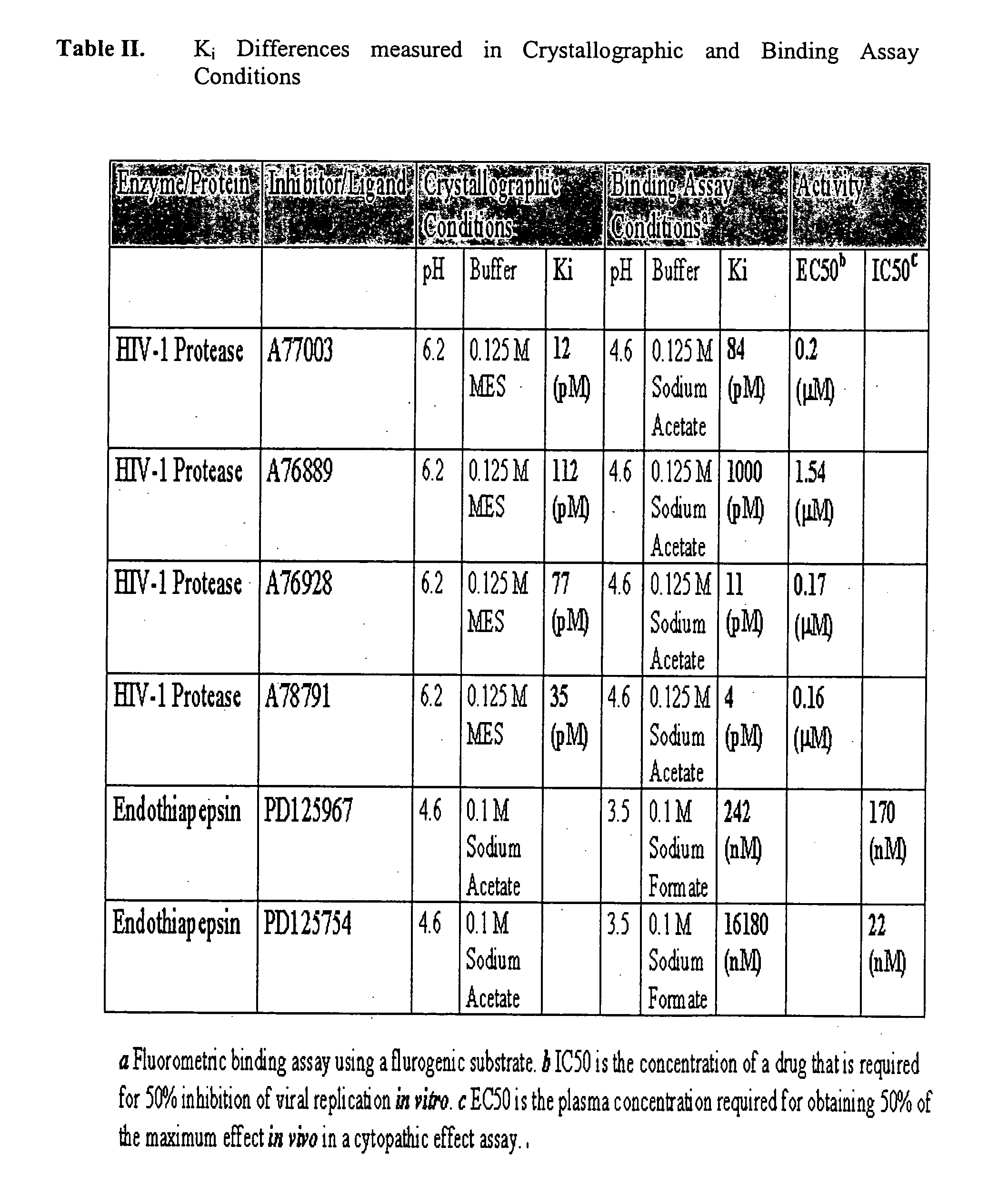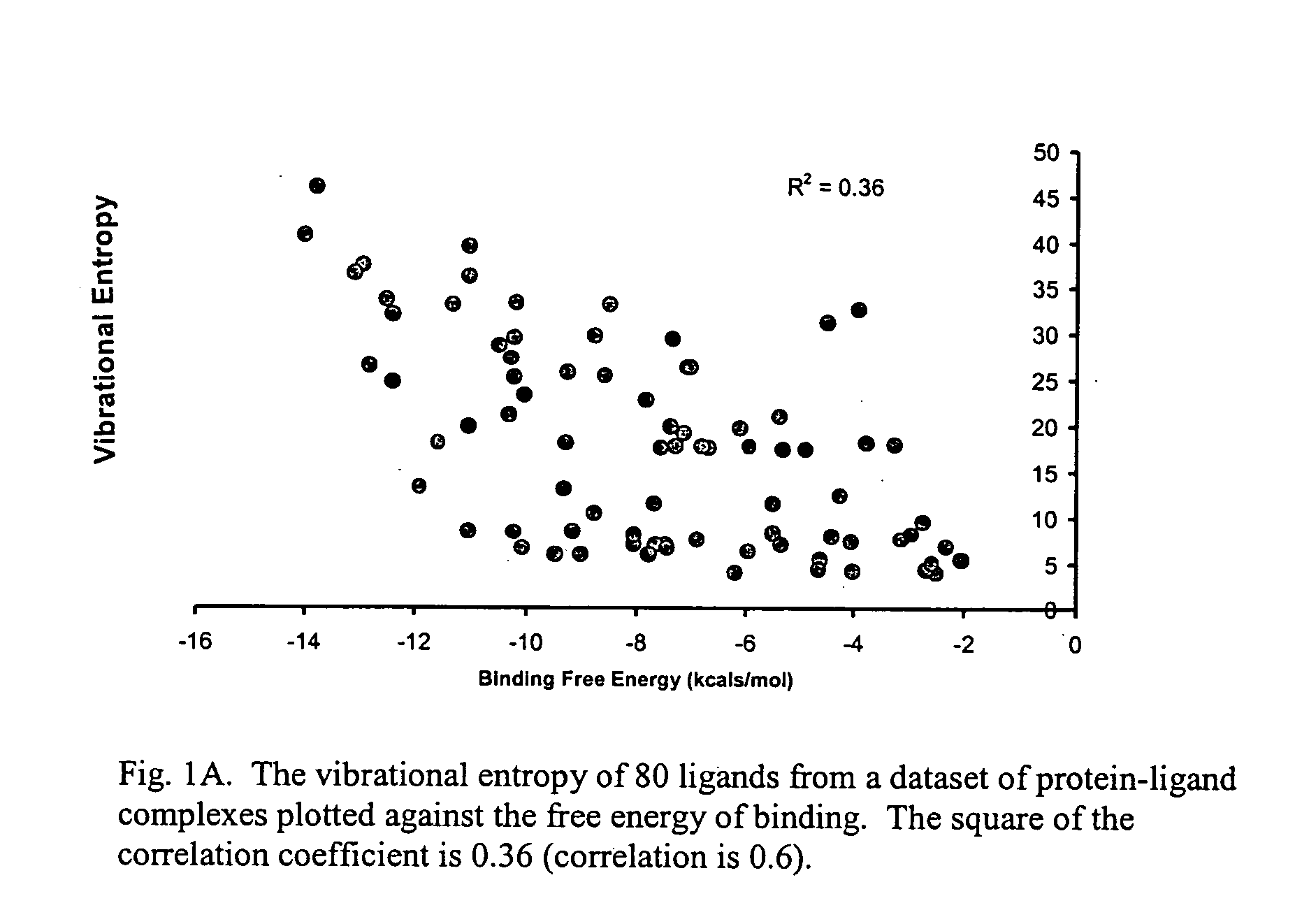Quantum mechanics based method for scoring protein-ligand interactions
a quantitative mechanics and protein ligand technology, applied in the field of protein ligand interactions, can solve the problems of elusive physical model robust enough to satisfactorily evaluate the binding of ligands to proteins, and affecting the overall r&d cost. , the scoring of poses in order to predict the binding free energy has proved much more difficul
- Summary
- Abstract
- Description
- Claims
- Application Information
AI Technical Summary
Benefits of technology
Problems solved by technology
Method used
Image
Examples
example 1
Calculation of Protein-Ligand Binding Free Energy Method
One hundred and fifty protein-ligand complexes were downloaded from a Protein Data Bank (PDB), in which each complex's three-dimensional structure and experimental Ki's, Kd's, IC50's and / or binding free energies had been experimentally determined. Binding measurements were converted to a free energy value using the Gibbs equation (ΔG=−RT lnKi). A list of the structures along with their PDB ID and binding free energies is provided in Table I. The PDB database comprised protein families that include, without limitation, aspartic proteases, serine proteases, sugar binding proteins, amino acid binding proteins or carbonic anhydrases. The protein-ligand complexes were characterized by a wide spectrum of active site structures and chemical patterns. The structures also spanned a wide range of experimental binding affinities from −2 kcals / mol to −14 kcals / mol.
Preprocessing of the protein-ligand structures from the PDB files was ac...
PUM
| Property | Measurement | Unit |
|---|---|---|
| free energy of binding | aaaaa | aaaaa |
| quantum mechanical Hamiltonian | aaaaa | aaaaa |
| quantum mechanical/ | aaaaa | aaaaa |
Abstract
Description
Claims
Application Information
 Login to View More
Login to View More - R&D
- Intellectual Property
- Life Sciences
- Materials
- Tech Scout
- Unparalleled Data Quality
- Higher Quality Content
- 60% Fewer Hallucinations
Browse by: Latest US Patents, China's latest patents, Technical Efficacy Thesaurus, Application Domain, Technology Topic, Popular Technical Reports.
© 2025 PatSnap. All rights reserved.Legal|Privacy policy|Modern Slavery Act Transparency Statement|Sitemap|About US| Contact US: help@patsnap.com



